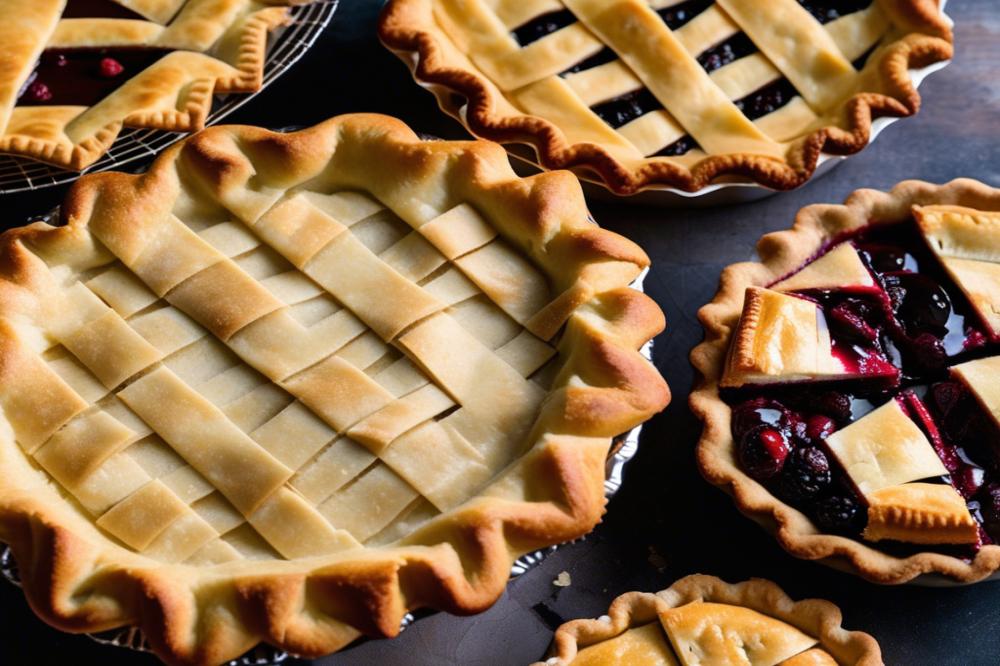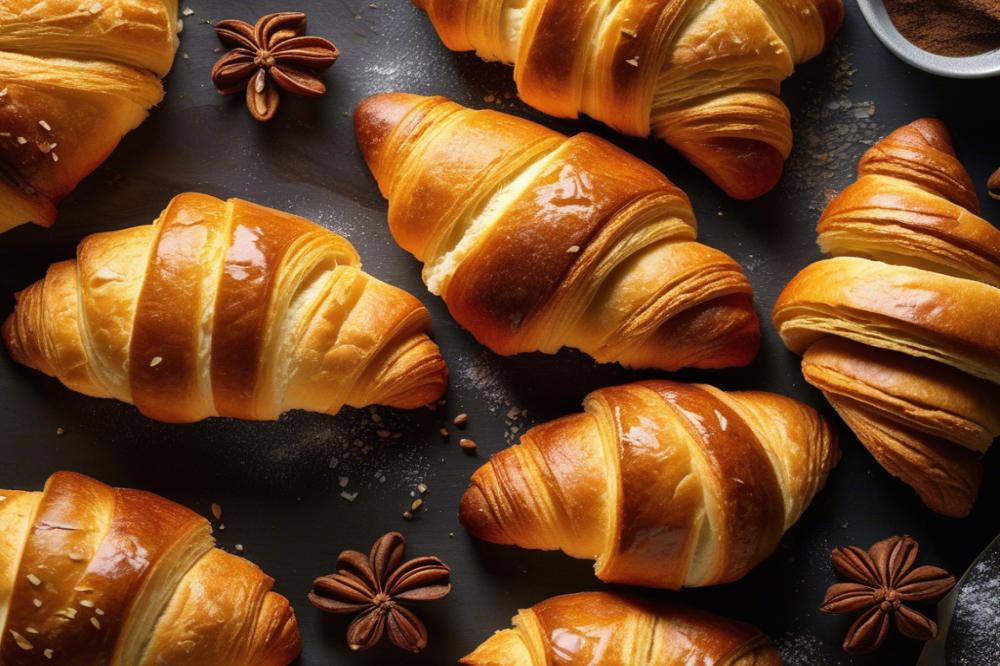Introduction
Gluten-free baking has gained significant attention in recent years. Many people are adjusting their diets for various reasons, which has led to a rising demand for gluten-free alternatives. For those who avoid gluten, enjoying traditional pie recipes can feel challenging. This is where gluten-free pie crust options come into play. They provide a delicious solution for both savory pies and dessert pies.
Finding the best pie crusts can be overwhelming. The market offers numerous crust alternatives, each presenting its own set of qualities. Some deliver a flaky crust, while others aim for that coveted buttery crust texture. The variety available allows for experimenting with different baking techniques, creating exciting flavors and textures.
This article serves as a guide to help navigate the world of gluten-free pie crusts. We will delve into what to look for in a crust, share key pie crust tips, and highlight the crusts that hold up best during baking. With our insights, you can create an easy pie crust that dazzles your friends and family.
Understanding Gluten-Free Pie Crust

Gluten-free pie crust refers to a type of crust that does not contain gluten, a protein found in wheat, barley, and rye. This option is essential for those with celiac disease or gluten intolerance. The quest for a flaky crust without gluten can be challenging but rewarding.
Common Gluten-Free Flours and Ingredients
Diverse flours create gluten-free crust alternatives. Almond flour is popular for its nuttiness and moist texture. Coconut flour adds sweetness but requires careful handling due to its absorbent nature. Rice flour is another common choice, often used in blends to achieve the right consistency. Some bakers opt for pre-mixed gluten-free flour blends, which typically include starches for better structure.
Differences Between Traditional and Gluten-Free Pie Crusts
Traditional pie crust relies on gluten for structure and elasticity. When making savory pies or dessert pies, this creates a tender, buttery crust. In contrast, gluten-free baking must rely on different techniques. Without gluten, the dough can become crumbly. It often requires chilling to help improve texture.
When crafting gluten-free recipes, understanding the role of each ingredient is vital. Binding agents like xanthan gum or psyllium husk help mimic the properties of gluten. These additions result in a more cohesive dough, making pie crust tips even more crucial when baking.
Baking techniques vary too. Roll out dough carefully, as it can easily tear. Preparing an easy pie crust involves patience, as adjustments may be necessary to get it just right. Experimentation may lead to unique combinations that surprise and delight.
Types of Gluten-Free Pie Crusts

When it comes to making gluten-free pie crusts, there are several alternatives available. Each offers its own benefits and unique characteristics. Common options include almond flour, coconut flour, and even oats. These ingredients provide different textures and flavors that can enhance your pie experience. A choice among these can shift the overall taste and feel of your dessert. Some people prefer a flaky crust, while others lean toward a buttery crust.
Flaky Crust vs Buttery Crust
Flaky crusts are often seen as light and crispy. They crumble easily, providing that essential texture that many enjoy. These crusts typically use fats like coconut oil or butter mixed with gluten-free flours. Achieving the right balance requires some practice, especially during gluten-free baking. Buttery crusts, on the other hand, deliver a rich and tender mouthfeel. Often made with heavier fats, they can hold a significant amount of filling. Each type serves its purpose well, whether for savory pies or dessert pies. Your choice may depend on the filling you plan to use.
Popular Gluten-Free Pie Crust Recipes
There are numerous pie recipes out there that utilize various crust alternatives. One popular recipe features almond flour combined with cold butter for a flaky texture. Another option uses a mix of coconut flour and eggs, creating a slightly sweet and buttery crust. Some recipes even incorporate nut butters for added flavor. These variations allow for creativity while maintaining a gluten-free diet. Pie crust tips often recommend chilling the dough before rolling it out to help with consistency. Simple baking techniques can also elevate your dish. For an easy pie crust, consider starting with a pre-made option found in stores. These can save time while still delivering good results in your baking. Experiment with these recipes to see which type you prefer.
Analyzing the Best Gluten-Free Pie Crusts
Factors that Affect Crust Durability
Baking a pie crust involves various factors that impact its structure and performance. First, the choice of flour plays an important role. Some flours do not bind well, leading to crumbles. Moisture content also matters. If the dough is too wet, it may become soggy. Temperature during preparation influences the final product too. Keeping the dough cold helps it maintain a flaky texture.
Fat type impacts flavor and texture. A buttery crust typically tastes rich and comforting. In contrast, using oils or other fats may change the overall flavor. Additives like xanthan gum or psyllium husk can enhance elasticity, making the crust sturdier. Evaluating these factors helps bakers find the right balance for their recipes.
Texture and Flavor Profiles
Different brands and homemade options offer unique textures and flavors. A flaky crust often crumbles just right upon each bite, making it enjoyable. Some crusts are more dense, which may be better for savory pies. Buttery crusts tend to provide a comforting, rich flavor, appealing to many.
Gluten-free baking may sometimes yield a dry or gritty texture. However, with the right combination of ingredients, this challenge can be overcome. Combining almond flour and coconut flour, for example, can create a light and delicious crust. When considering pie recipes, pay attention to flavors. Some crust alternatives include using oats or even ground nuts, which can add a distinct taste to both savory and dessert pies.
Reviews of Specific Brands and Homemade Options
Several brands stand out in the gluten-free market. Bob’s Red Mill offers a versatile mix, perfect for creating an easy pie crust. Many people appreciate the simple instructions on their packaging. In addition, King Arthur Baking Company has a gluten-free pie crust mix that receives high praise for its buttery flavor. Bakers love how it holds up under pressure, making it suitable for fruit-filled desserts.
Homemade options can also deliver outstanding results. Many online recipes guide users to make a crust that rivals traditional counterparts. Using a blend of different gluten-free flours allows for personalization. With some pie crust tips, anyone can achieve an exceptional result.
Experimentation often leads to the best outcomes. Seek out recipes that highlight unique flavor combinations. Explore alternatives based on personal taste preferences. Different baking techniques can affect how a crust bakes, contributing to its overall integrity.
Tips for Making the Best Gluten-Free Pie Crust
Essential pie crust tips for gluten-free baking
When creating a pie crust, using the right combination of flours is key. Look for blends that include almond flour, coconut flour, or even oat flour. These options can yield a flaky crust that won’t disappoint. Pay attention to the fat used; butter or coconut oil can give that rich, buttery flavor. Gradually adding cold water brings the dough together without making it too sticky.
Recommended baking techniques for best results
Baking a gluten-free crust may require some unique approaches. Always preheat the oven well to set the crust’s structure quickly. Another tip involves placing parchment paper over the crust before adding pie weights. This prevents shrinkage during baking, allowing your crust to hold its shape. For both savory pies and dessert pies, a blind bake can also help improve texture.
The importance of chilling and resting the dough
Chilling the dough is an important step that shouldn’t be overlooked. A rested dough is easier to roll out and shapes better. Aim to chill the dough for at least 30 minutes. This allows the fats to firm up, contributing to that desired flaky texture. Don’t forget to let your crust rest before baking. Waiting helps release any tension in the dough, minimizing shrinking.
By following these pie crust tips and techniques, you will create a delicious gluten-free pie crust that complements any of your favorite pie recipes. Whether you’re whipping up sweet or savory options, the right methods will elevate your baking experience.
Savory and Dessert Pies: Choosing the Right Crust
Ideal Crusts for Savory Pies
Savory pies, like quiches or pot pies, often demand a sturdier crust. A flaky crust made from a mix of almond flour and tapioca flour can handle hearty fillings without becoming soggy. Incorporating cheese into the crust adds richness and enhances flavor. For a more robust bite, consider adding herbs to the dough. This not only elevates taste but can complement your filling beautifully. Another popular crust alternative is a chickpea flour crust, which brings a delightful nuttiness to the table.
Best Choices for Dessert Pies
Dessert pies, on the other hand, benefit from a buttery crust that melts in your mouth. A classic choice involves using a blend of coconut flour and butter, giving sweetness without overwhelming richness. Chocolate lovers might enjoy a crust made from crushed gluten-free cookies bound with butter, creating a sweet foundation. Fresh fruit pies can shine with a simple almond flour crust. The combination yields a delicate crunch that balances well with juicy fillings. Pie recipes focusing on ease often recommend chilling the dough to create that perfect flaky texture.
Pairing Pie Recipes with the Right Gluten-Free Crust
Choosing the right pie crust is crucial for the success of your dish. A rich custard needs a reliable base, while cream-filled pies may call for something sturdier. When preparing a savory dish, consider the filling. Heavy proteins work best with a thicker crust, which won’t crumble under pressure. For lighter, vegetable-focused pies, opt for a flaky crust that brings a touch of airiness. Similarly, dessert options vary widely; think about the dominant flavor. Citrus pies do nicely with a sweet, buttery crust, enhancing brightness without competition. Pay attention to the textures and flavors in both savory and dessert pies. Doing so can drastically change the dining experience. Use these pie crust tips to guide your baking techniques. A thoughtfully chosen crust not only elevates the entire pie but also showcases the effort behind gluten-free baking.
Final Thoughts on Gluten-Free Pie Crusts
In summary, creating a flavorful and satisfying gluten-free pie crust involves understanding the variety of ingredients that can greatly influence the texture and taste. A flaky crust often results from a precise mix of flours and fats, while a buttery crust adds richness that elevates any dessert. Directing attention to the balance of moisture and fat plays a crucial role in achieving a desirable outcome.
Don’t hesitate to venture beyond traditional recipes. Experimenting with different gluten-free alternatives can yield surprising and delightful flavors. Each blend of flours presents its own unique characteristics; rice flour, almond flour, or even oat flour can contribute distinctly to the final product. Testing combinations may lead to a personal favorite, ensuring a delightful experience every time you bake.
In the pursuit of the ultimate pie crust, remember that the process is as important as the result. Baking is about discovering what works best for you. While the perfect flaky texture and rich buttery taste may not come on the first try, persistence will yield results. Embrace the journey of experimentation, and enjoy every successful and unsuccessful attempt. You may just find your new go-to recipe hidden amongst the trials!



